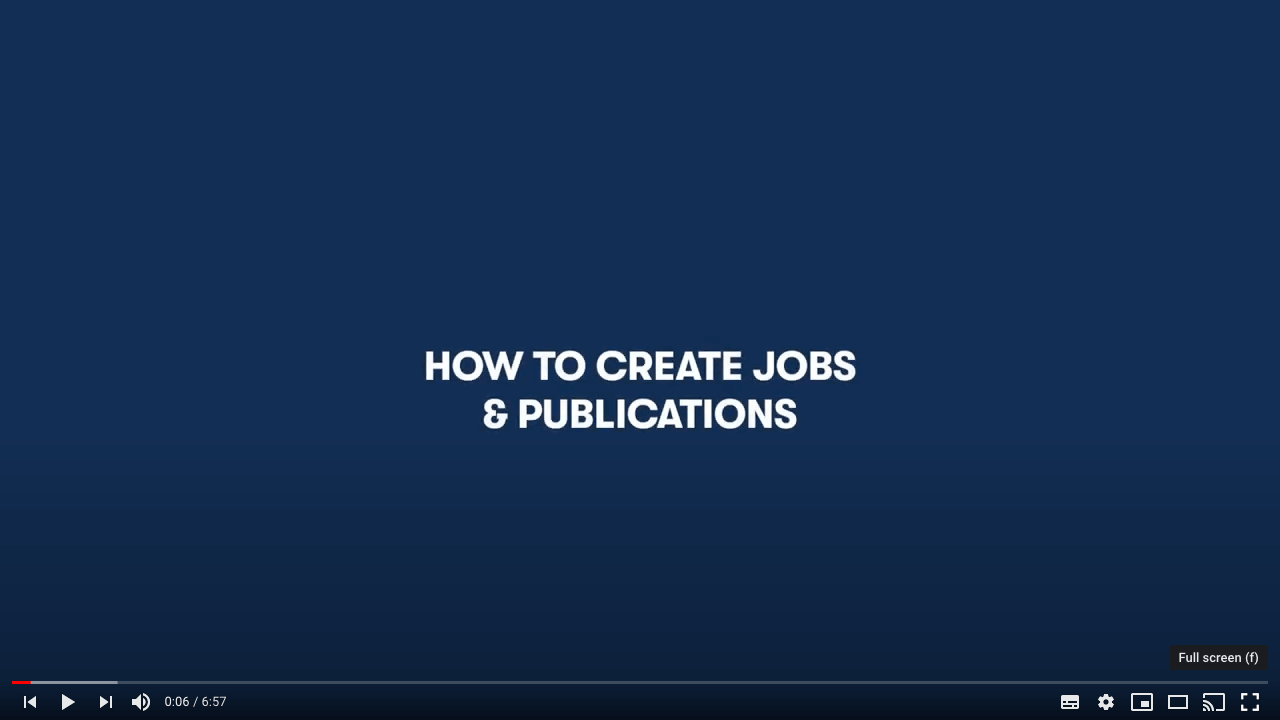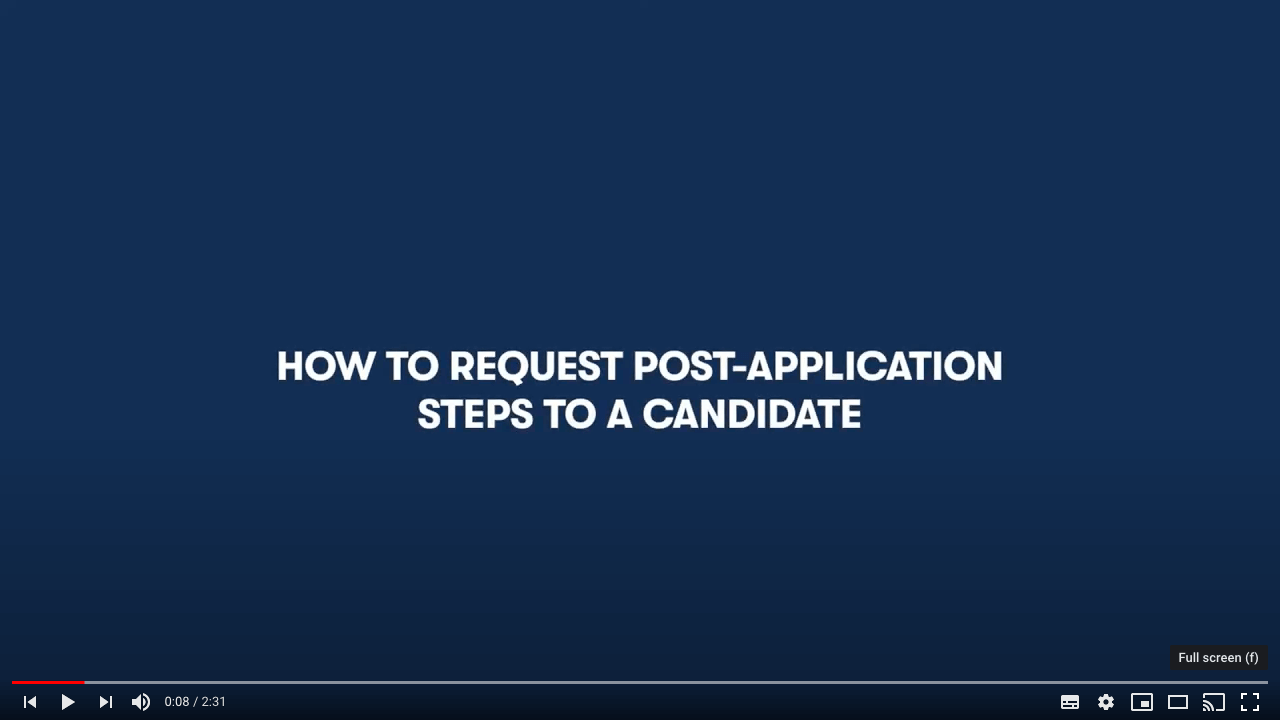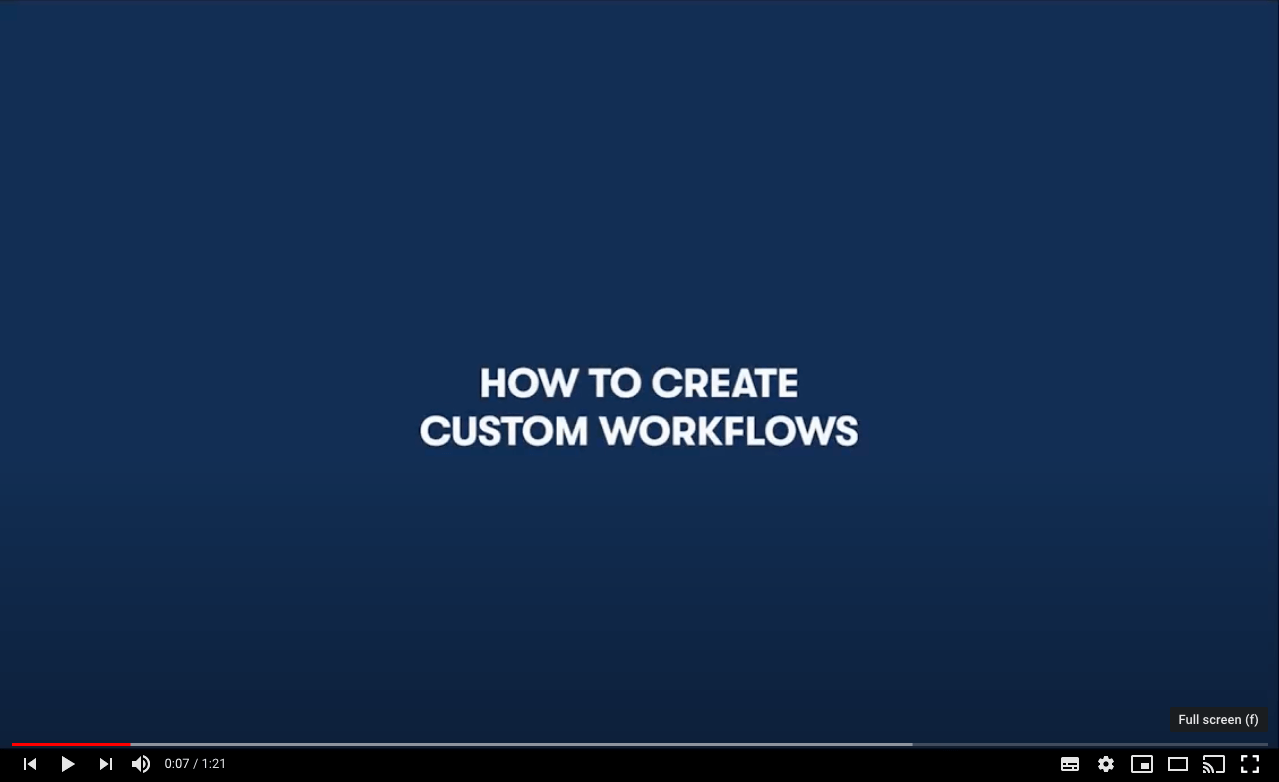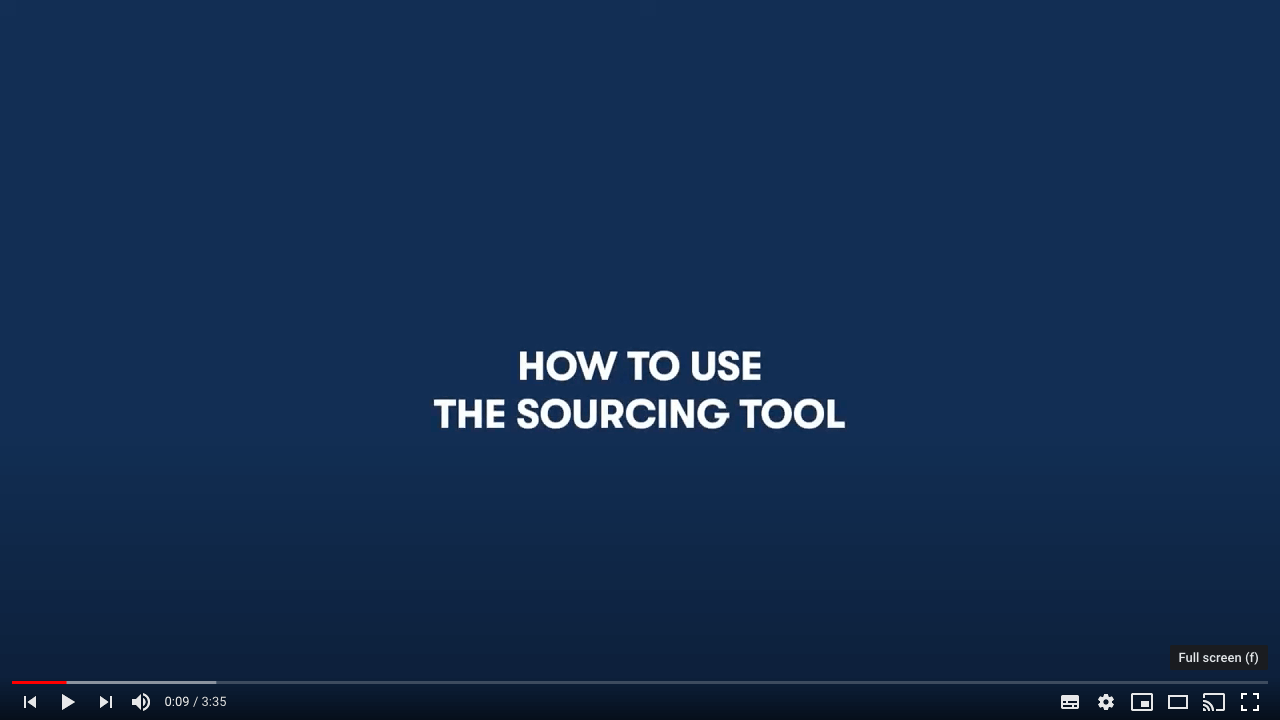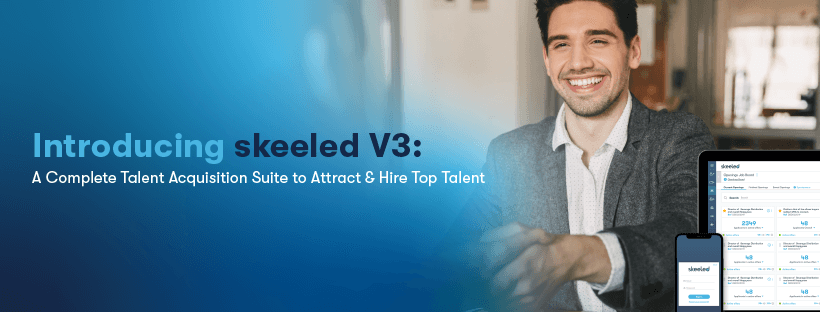With the launch of our brand new talent acquisition suite, our main goal is to support all the recruiting needs of employers. Thus, we enhanced our offering by including amazing new features and making some improvements which we deemed necessary to achieve this goal. We want to help companies find, attract and hire top talent through an optimised and accelerated hiring process.
With the skeeled V3 now up and running, we want to make sure our users make the most out of the new features the software has to offer. Therefore, we prepared a few "how-to" tutorials to guide you through the use of some of the new features or learn about the improvements that were made.
These are the first four “how-to” of a series that we’ll keep delivered throughout the next weeks.
1. How to Create Jobs and Publications
In this new version of skeeled, the jobs you create are used for private company purposes only. Here is where you’ll manage and store applicants for a specific position. To publish a job and receive applications you need to create a publication. Publications allow you to establish the applicant’s application process and the different ways you want to publish the job.
Create a New Job:
1 - Click on “add new job” on the side menu or directly on the “new job” card on the job dashboard.
2 - Choose a new job form or use a previous job as a template.
3 - New job form:
- Fill the job information. On the internal description, which is private, include the specifications for the position so that everyone in the recruitment team is aware of the profile you are looking for.
- Generate a reference code (not mandatory).
- Choose the workflow you want to use on this job.
- Fill the job’s address.
- Fill the contract details (note that “employment type” is the only required field).
- Determine the desired work experience, detailing the industry and years of experience. Note that, in accordance with the job title, you’re presented with suggestions for the job category in order to improve the job description’s accuracy.
- Fill the education requirements.
- Set the required languages. You can use advanced options if you wish to further increase the efficiency of the matching. Additionally, you can also specify languages that will be considered a plus.
- Lastly, add the recruiters you wish to provide access to the job.
- Click "publish and leave" and the job is created without publications, or click "next" and create a publication immediately.
4 - If you go back to the dashboard, you can see the job you’ve just created. If you enter the job and click on “overview” on the top right corner of your screen, you’ll be able to review the job information. On the right side, you’ll find the actions you can perform on the job: duplicate, edit or archive.
5 - Use previous job as template:
- Choose a job from the list and click on “show detailed customisation”.
- Review all the job details and choose the information you wish to copy.
- Click "next" to go to the job form which will be already filled.
- Review and edit the information as you please.
- Then click "publish and leave" to create a publication later or "next" to create a publication immediately.
Create a New Publication:
1 - Click on “add new publication” on the publications section inside a job or click “next” after creating a new job.
2 - Choose a new publication form or use a previous publication as a template.
3 - New publication form:
- Define the type of publication you wish to create: internal, external and recruitment agency. Note that you can have more than one active publication per job, as long as they’re from different types, but you need to create them separately.
- Choose a colour to identify the publication
- Choose the “AI Boost Level”:
“Unassisted applicant screening”- offers 2 CV types options (Simplified CV and Standardised CV), but will not include additional application steps. Recruiters will need to send post-application steps requests to the candidates they wish to complete the personality test or video interview. And, most importantly,__ with this option, candidates won’t be accepted or rejected by our AI algorithms.__
“Assisted applicant screening” - only allows the Standardised CV, but can include the personality test and video interview steps and candidates are matched and ranked by our AI algorithms.
- Choose the language you want the publication to be in. Beware that if you select more than one language, you’ll need to fill some fields in all the languages you’ve selected. In that case, you can re-order the selected languages and the publication’s default language will be the one you put on top. Once you click next, it won’t be possible to edit the languages.
- Review the information previously filled when you created this job. You can keep it as is or make changes by clicking on the “edit” button on your right. However, if you edit a field, it will be signalled with a red warning sign as we recommend against editing the job on the publication as it will not edit the job itself, thus creating some inconsistencies.
- Next, on the publication details, you can attribute a new job title or keep the same for the publication, as this will be the title the applicants will see. Choose the end date (if you wish to have one) and specify the date for the first day of work. If this is a “recruitment agency publication” type you also need to choose the agency or agencies in this section.
- Choose the company logo you want to appear in this publication.
- Add the steps you'll use in this recruitment process. If you choose personality, you need to set the test type by answering a quick questionnaire and if you choose the video interview, you need to add the questions.
- Click "next" to go to the information page and fill in the company description, the role’s responsibilities, the must-have and nice-to-have requirements and tell candidates what you offer them. Be careful to not contradict the information you’ve added so far.
- Following, is the Extra page where you can add some CV Add-Ons, either some extra questions or specific information you may wish to request from your candidates and activate integrations (if applicable).
- Finally, you can review all the publication’s information, make corrections if needed, and finalise by clicking “publish”.
4 - Use previous publication as template:
- You have 2 options: choose an existing publication from this job or choose a publication from another job. If you wish to choose a publication from another job you need to turn off the option “choose existing publication from this job”.
- Choose a previous publication and expand the detailed customisation to see all the information.
- Choose the fields you want to copy.
- The next steps are the same as for creating a new publication.
Editing Jobs and Publications:
If you wish, you can edit both jobs and publications after they’re created.
Edit a Job:
1 - Click on “actions” on the job card and choose “edit”, or go inside the job, click on the overview and then on the "edit" button on your right.
2 - Change the fields as you wish then just click "save and leave".
Edit a Publication:
1 - Enter the job.
2 - Click on “publications”.
3 - Then either click on the "actions" button on the right or enter the publication and use the "edit" button.
4 - Change the fields as you wish and then just click save and leave.
Click on the image to watch the video tutorial on YouTube:
2. How to Request Post-Application Steps to a Candidate
The skeeled platform enables a more flexible recruiting process by allowing recruiters to request different steps to candidates after they submitted their application. Post-application steps can be pre-determined through the creation of templates or can be defined at the moment the request is sent.
Request Post-Application Steps to a Candidate:
1 - Access a job and select a candidate on the applicants list. 2 - Enter the profile and click on the “actions” button on the right upper corner. 3 - Select the “request application steps” option. 4 - Choose an existing template or add the desired step. For applicants that have already completed the personality test, you’ll only be able to request a video interview which can be the first or an additional one. 5 - If you choose to add a step, set the personality test type and/or interview questions. 6 - If you choose a template with the video interview step, you can still add or remove questions. 7 - Click on the “execute” button and the request will be sent. 8 - The request to complete post-application steps will appear both in the candidate profile on the activity section and inside the activity records. 9 - If you click on the "actions" button again, you’ll see that the “request application steps” option disappeared along with other actions that will only be available after the candidate completes the pending steps. 10 - You can also send post-application steps requests in bulk.
- Go to the applicants list and click on “bulk actions”, on the upper right side of the screen.
- Select the candidates you want to send the request to.
- Choose the action “request application steps”.
- Finally, choose a template or add a step and click on the “execute” button. The success message confirms that the request was sent.
Create Post-Application Steps Templates:
1 - Go to the job overview page and click on “add template” in the post-application steps section. 2 - Name the template and add the desired steps. You can add video interview questions and/or the personality test. 3 - Click “save” and your template is now available for you to use.
Click on the image to watch the video tutorial on YouTube:
3. How to Create Custom Workflows
With skeeled recruiters have the possibility to create custom workflows for each job. Any workflow template can be edited and the changes will impact all the jobs that are using this workflow retroactively. Bear in mind that you can only delete workflows that were never used for jobs.
Create a New Custom Workflow:
1 - Access the settings page and click on the workflows tab.
2 - There you’ll find your default workflow named “skeeled workflow”.
1- Click on the “create new template” button.
2 - Name your workflow.
3 - Add the desired stages between “New” and “Rejected”. Note that these two stages are mandatory for every workflow, however, every stage between these two is fully customisable.
4 - Choose which stages correspond to the qualified candidates’ list, so that the users with supervisor and visitor permissions can see the applicants.
5 - Click "save" and your workflow is ready to use.
Click on the image to watch the video tutorial on YouTube:
4. How to Use the Sourcing Tool
Sourcing is a key part of any organisation’s recruitment strategy. As such, skeeled developed a new sourcing tool that allows the sourcing of candidates in 3 different ways: manually uploading CVs, searching candidates on LinkedIn and using a widget to import candidate profiles directly to the platform.
Using the sourcing tool:
1 - Access the sourcing tool on the side menu.
2 - On the sourcing page you’ll have access to the “enter manually” functionality, to the "sourcing pool" and to the “search LinkedIn” functionality.
3 - “Enter manually” - click here to upload CVs.
- Simply drag and drop or use the “choose file” button to add CVs. You can add more than one CV at a time.
- You’ll immediately see the applicants’ personal information and CV and you’ll also be able to check if the files were successfully parsed. If a red warning is displayed, you may need to fill some data such as the applicant’s name and email which are required.
- If you wish to remove an applicant, you can do so by clicking on “remove”.
- Select the sourced applicants and send them to a specific job or to the sourcing pool. You can perform this action individually or in bulk.
- If any of the applicants have already been moved to a job or to the sourcing pool, you’ll see a warning.
4 - “Sourcing pool” - click here to see all the applicants that were sourced and sent here.
- Open one of these applicant’s profile and see that it has a “sourced” tag. This way, even when these applicants are sent to a job, you’ll always be aware that they were sourced.
- By clicking on the “actions” button inside the applicant’s profile you can perform a variety of tasks, such as moving applicants to a job, adding other tags, sending an email, among others.
- You can perform the same actions outside the profile, on the sourcing pool, one candidate at a time or in bulk.
5 - “Search LinkedIn” - click here to search for candidates on LinkedIn.
- Start by downloading our browser extension (for Google Chrome) so that you can import the profiles you find, directly to the skeeled platform. Simply click on the “download extension” button which will redirect you to the chrome web store and then click “add to chrome” and confirm you want to add the extension.
- On the search bar, type job-related keywords such as professional titles, job categories and/or location to find candidates on LinkedIn and click “search”.
- On the search results, you’ll see the name, role and company of the candidates.
- To view a profile, simply click on the “open profile in new tab” button.
- To import a profile to your account just click on the skeeled widget. A message will appear to confirm that the applicant was submitted successfully.
- The profiles you imported will appear on the sourcing pool.
Click on the image to watch the video tutorial on YouTube:
Skeeled offers you the perfect opportunity to bring innovation and digitalisation to your hiring. Check our website or our LinkedIn, Twitter and Facebook pages for further information.
Thanks for reading and see you next time!
Your team here at skeeled


